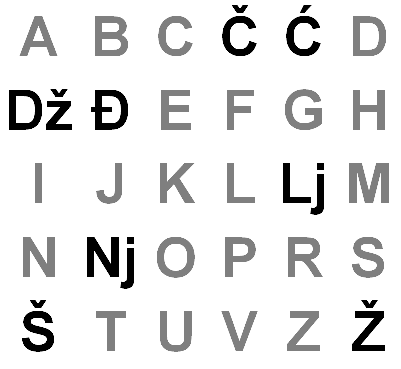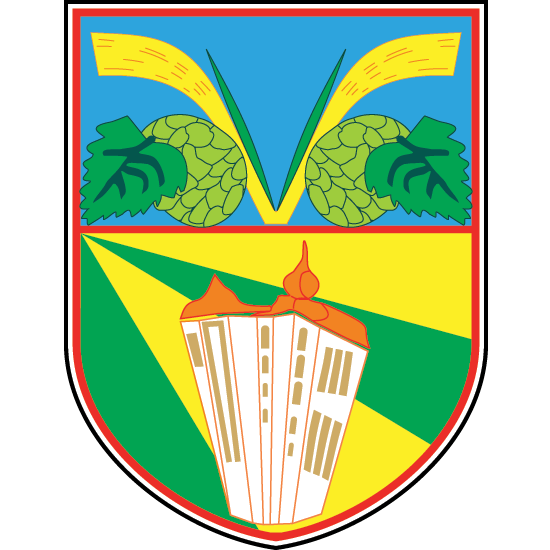|
Bački Petrovac
Bački Petrovac ( sr-Cyrl, Бачки Петровац; ; ) is a town and municipality located in the South Bačka District of the autonomous province of Vojvodina, Serbia. The town has a population of 5,227, while the municipality has 11,512 inhabitants. Name In Serbian Cyrillic the town is known as Бачки Петровац, in Serbian Latin as ''Bački Petrovac'', in Slovak as ''Petrovec'' or ''Báčsky Petrovec'', in Hungarian as ''Petrőc'', and in German as ''Petrovacz''. Bački Petrovac is the economical, cultural and administrative center of the municipality. It is a settlement of a town character, while the other three are villages of Pannonian type. History Being in south Bačka which according to special climatic and other conditions is one of the most fertile parts of Serbia, very suitable for settling down, here in this region people made their settlements very early. The first written records about Petrovac appears in the 13th century when Petrovac is mentioned ... [...More Info...] [...Related Items...] OR: [Wikipedia] [Google] [Baidu] |
List Of Cities In Serbia
This is the list of cities and towns in Serbia, according to the criteria used by Statistical Office of the Republic of Serbia, which classifies the settlements into ''urban'' and ''other'', depending not only on size, but also on other administrative and legal criteria. Also villages with the municipal rights have been added to the list. Organization ;Cities ''City, Cities'' in administrative sense are defined by the Law on Territorial Organization. The territory with the ''city'' status usually has more than 100,000 inhabitants, but is otherwise very similar to a municipality. They enjoy a special status of autonomy and self-government, as they have their own civic parliaments and executive branches, as well as mayor (, plural: ) is elected through popular vote, elected by their citizens in local elections. Also, the presidents of the municipalities are often referred to as "mayors" in everyday usage. There are 28 cities (, singular: ), each having an assembly and budget of its ... [...More Info...] [...Related Items...] OR: [Wikipedia] [Google] [Baidu] |
Serbian Latin Alphabet
Gaj's Latin alphabet ( sh-Latn-Cyrl, Gajeva latinica, separator=" / ", Гајева латиница}, ), also known as ( sr-Cyrl, абецеда, ) or ( sr-Cyrl, гајица, link=no, ), is the form of the Latin script used for writing all four standard varieties of Serbo-Croatian: Bosnian, Croatian, Montenegrin, and Serbian. It contains 27 individual letters and 3 digraphs. Each letter (including digraphs) represents one Serbo-Croatian phoneme, yielding a highly phonemic orthography. It closely corresponds to the Serbian Cyrillic alphabet. The alphabet was initially devised by Croatian linguist Ljudevit Gaj in 1835 during the Illyrian movement in ethnically Croatian parts of the Austrian Empire. It was largely based on Jan Hus's Czech alphabet and was meant to serve as a unified orthography for three Croat-populated kingdoms within the Austrian Empire at the time, namely Croatia, Dalmatia and Slavonia, and their three dialect groups, Kajkavian, Chakavian and Shtokavia ... [...More Info...] [...Related Items...] OR: [Wikipedia] [Google] [Baidu] |
Slovaks Of Serbia
According to the 2022 census, Slovaks ( sr-Cyrl-Latn, Словаци, Slovaci) in Serbia number 41,730, constituting 0.63% of the country's population. They mainly live in Vojvodina (39,807), where they constitute the third largest ethnic group after Serbs and Hungarians. Like other ethnic Slovaks, they speak the Slovak language, but most of them are Protestant ( Evangelical-Augsburg Church, a Lutheran Protestant denomination) by faith and not Roman Catholic, unlike most Slovaks in Slovakia. Demographics Most Slovaks live in Kovačica (8,497 Slovaks) and Bački Petrovac (5,773 Slovaks). There are two municipalities in Vojvodina with absolute or relative Slovak majorities: Bački Petrovac (with 66.4% Slovaks) and Kovačica (with 41% Slovaks). The towns of Kovačica and Bački Petrovac are the cultural centres of Slovaks in Vojvodina. Slovak is one of the six official languages of the provincial administration in Vojvodina. Slovak in the territory of the Republic of Serbia are ch ... [...More Info...] [...Related Items...] OR: [Wikipedia] [Google] [Baidu] |
Novi Sad
Novi Sad ( sr-Cyrl, Нови Сад, ; #Name, see below for other names) is the List of cities in Serbia, second largest city in Serbia and the capital of the autonomous province of Vojvodina. It is located in the southern portion of the Pannonian Plain on the border of the Bačka and Syrmia geographical regions. Lying on the banks of the Danube river, the city faces the northern slopes of Fruška Gora and it is the fifth largest of all List of cities and towns on the river Danube, cities on the river Danube. It is the largest Danube city that is not the capital of an independent state. , the population of the city proper area totals 260,438 while its urban area (including the adjacent settlements of Petrovaradin and Sremska Kamenica) comprises 306,702 inhabitants. According to the city's Informatika Agency, Novi Sad had 415,712 residents in 2025. Novi Sad was founded in 1694, when Serb merchants formed a colony across the Danube from the Petrovaradin Fortress, a strategic Habsb ... [...More Info...] [...Related Items...] OR: [Wikipedia] [Google] [Baidu] |
Serb
The Serbs ( sr-Cyr, Срби, Srbi, ) are a South Slavic ethnic group native to Southeastern Europe who share a common Serbian ancestry, culture, history, and language. They primarily live in Serbia, Kosovo, Bosnia and Herzegovina, Croatia, Montenegro as well as in North Macedonia, Slovenia, Germany and Austria. They also constitute a significant diaspora with several communities across Europe, the Americas and Oceania. The Serbs share many cultural traits with the rest of the peoples of Southeast Europe. They are predominantly Eastern Orthodox Christians by religion. The Serbian language (a standardized version of Serbo-Croatian) is official in Serbia, co-official in Kosovo and Bosnia and Herzegovina, and is spoken by the plurality in Montenegro. Ethnology The identity of Serbs is rooted in Eastern Orthodoxy and traditions. In the 19th century, the Serbian national identity was manifested, with awareness of history and tradition, medieval heritage, cultural unity, de ... [...More Info...] [...Related Items...] OR: [Wikipedia] [Google] [Baidu] |
Slovaks
The Slovaks ( (historical Sloveni ), singular: ''Slovák'' (historical: ''Sloven'' ), feminine: ''Slovenka'' , plural: ''Slovenky'') are a West Slavic ethnic group and nation native to Slovakia who share a common ancestry, culture, history and speak the Slovak language. In Slovakia, 4.4 million are ethnic Slovaks of 5.4 million total population. There are Slovak minorities in many neighboring countries including Austria, Croatia, Czech Republic, Hungary, Poland, Romania, Serbia and Ukraine and sizeable populations of immigrants and their descendants in Australia, Canada, France, Germany, United Kingdom and the United States among others, which are collectively referred to as the Slovak diaspora. Name The name ''Slovak'' is derived from ''*Slověninъ'', plural ''*Slověně'', the old name of the Slavs ( Proglas, around 863). The original stem has been preserved in all Slovak words except the masculine noun; the feminine noun is ''Slovenka'', the adjective is ''slovensk ... [...More Info...] [...Related Items...] OR: [Wikipedia] [Google] [Baidu] |
Maglić, Serbia
Maglić () or Bački Maglić (Бачки Маглић) is a village located in the Bački Petrovac municipality, in the South Bačka District of Serbia. It is situated in the Autonomous Province of Vojvodina. Of the 2,695 population (2002 census) of the village, 2,426 are ethnic Serbs. Name In Serbian, the village is known as ''Maglić'' (Маглић), or formerly also "Bulkes" (Булкес) or "Buljkes" (Буљкес); in Croatian as ''Maglić''; in Hungarian as ''Bulkeszi'' or ''Bulkesz''; and in German as "Bulkes" (or ''Pfalzweiler''). History Before the World War II, the village was called Buljkes, and was inhabited chiefly by ethnic Germans, settled here around 1786, mostly from Baden-Württemberg. In 1944, many of the residents fled ahead of the advancing Russian and Partisan troops. Under the newly enacted AVNOJ laws, in December 1944 the remaining residents were forced to relocate to the newly established concentration camp at Bački Jarak and the village was abando ... [...More Info...] [...Related Items...] OR: [Wikipedia] [Google] [Baidu] |
Kulpin, Serbia
Kulpin (Serbian Cyrillic: Кулпин; ; ) is a village in Serbia. It is situated in the Bački Petrovac municipality, in the South Bačka District, Vojvodina province. According to the 2002 census, the population of the village numbering 2,976 people, of whom 2,116 are ethnic Slovaks. Historical population *1961: 3,742 *1971: 3,312 *1981: 3,226 *1991: 3,203 *2002: 2,976 Notable people * Bogić Vučković * Georgije Branković * Stefan Stratimirović See also *List of places in Serbia *List of cities, towns and villages in Vojvodina This is a list of cities, towns and villages in Vojvodina, a province of Serbia , image_flag = Flag of Serbia.svg , national_motto = , image_coat = Coat of arms of Serbia.svg , national_anthem = ... References *Slobodan Ćurčić, Broj stanovnika Vojvodine, Novi Sad, 1996. External links Kulpin web page Museum Exhibitions in Dundjerski Palace Places in Bačka Slovak communities in Se ... [...More Info...] [...Related Items...] OR: [Wikipedia] [Google] [Baidu] |
Gložan
Gložan ( sr-cyr, Гложан) is a village located in the Bački Petrovac municipality, in the South Bačka District of Serbia. It is situated in the Autonomous Province of Vojvodina. The population of the village numbering 1,706 people (2022 census), of whom many are ethnic Slovaks. Name In Serbian the village is known as ''Gložan'' (Гложан); in Slovak as ''Hložany''; and in Hungarian as ''Dunagálos''. Historical population *1961: 2,839 *1971: 2,682 *1981: 2,569 *1991: 2,491 *2002: 2,283 *2011: 2,002 *2022: 1,706 See also * List of places in Serbia * List of cities, towns and villages in Vojvodina This is a list of cities, towns and villages in Vojvodina, a province of Serbia , image_flag = Flag of Serbia.svg , national_motto = , image_coat = Coat of arms of Serbia.svg , national_anthem = ... References *Slobodan Ćurčić, Broj stanovnika Vojvodine, Novi Sad, 1996. Places in Bačka South Bačka ... [...More Info...] [...Related Items...] OR: [Wikipedia] [Google] [Baidu] |
Ján Kollár Gymnasium And Students' Home
The Ján Kollár Gymnasium and Students' Home ( sr-Cyrl-Latn, Гимназија ″Јан Колар″ са домом ученика, Gimnazija ″Jan Kolar″ sa domom učenika; ) in Bački Petrovac in Vojvodina, Serbia, founded in 1919, is a public coeducational high school ( gymnasium, similar to preparatory school) serving primarily communities of Slovaks in Serbia and the rest of the former Yugoslavia region. Initially established by evangelical priest Samuel Štarke and Julius Kubanyi, the gymnasium overcame early challenges, including the threat of closure due to lack of infrastructure, by constructing its building through voluntary contributions and support from Czechoslovakia and overseas Slovaks. The institution experienced growth in the interwar period in the Kingdom of Yugoslavia, developing educational facilities and a library. During World War II in Yugoslavia, it served as a resistance center against fascism despite being formally closed. In the post-war period, ... [...More Info...] [...Related Items...] OR: [Wikipedia] [Google] [Baidu] |
Slovaks In Serbia
According to the 2022 census, Slovaks ( sr-Cyrl-Latn, Словаци, Slovaci) in Serbia number 41,730, constituting 0.63% of the country's population. They mainly live in Vojvodina (39,807), where they constitute the third largest ethnic group after Serbs and Hungarians in Serbia, Hungarians. Like other ethnic Slovaks, they speak the Slovak language, but most of them are Protestant (Slovak Evangelical Church of the Augsburg Confession in Serbia, Evangelical-Augsburg Church, a Lutheran Protestant denomination) by faith and not Roman Catholic, unlike most Slovaks in Slovakia. Demographics Most Slovaks live in Kovačica (8,497 Slovaks) and Bački Petrovac (5,773 Slovaks). There are two municipalities in Vojvodina with absolute or relative Slovak majorities: Bački Petrovac (with 66.4% Slovaks) and Kovačica (with 41% Slovaks). The towns of Kovačica and Bački Petrovac are the cultural centres of Slovaks in Vojvodina. Slovak is one of the six official languages of the provincial ... [...More Info...] [...Related Items...] OR: [Wikipedia] [Google] [Baidu] |



